Abstract
Eighteen second-grade children initially received feedback in the form of nonredeemable tokens for reducing their disruptive classroom behavior. Four types of tutoring were then introduced in a Latin Square Design: noncontingent tutoring from fifth-grade peers, contingent peer tutoring, noncontingent college tutoring, and contingent college tutoring. No significant difference was found in the level of disruptive behavior of those children tutored by fifth-grade peers or college students, but contingent tutoring was significantly effective in reducing disruptive classroom behavior.
Keywords: academic behavior, peer tutoring, disruptive behavior, classroom control, education, feedback, peer reinforcement, material reinforcers, primary classroom, token economy, primary school children
Full text
PDF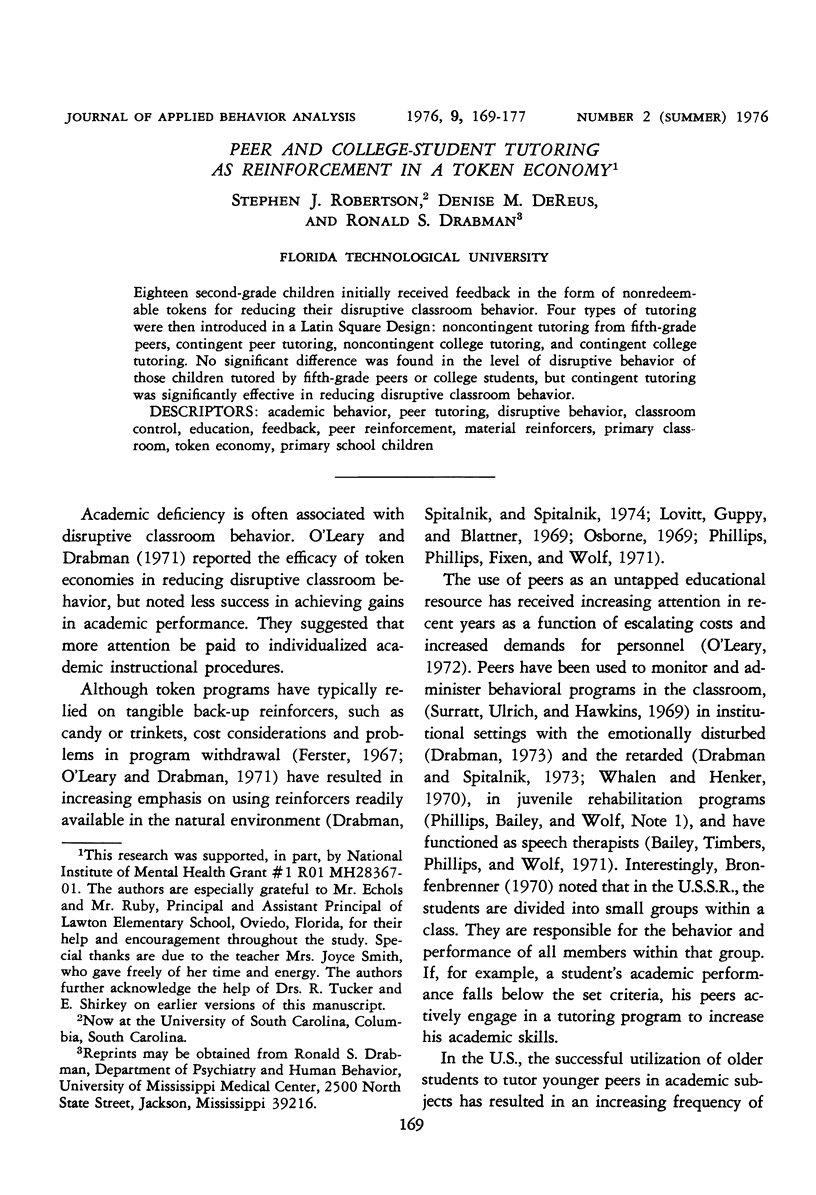
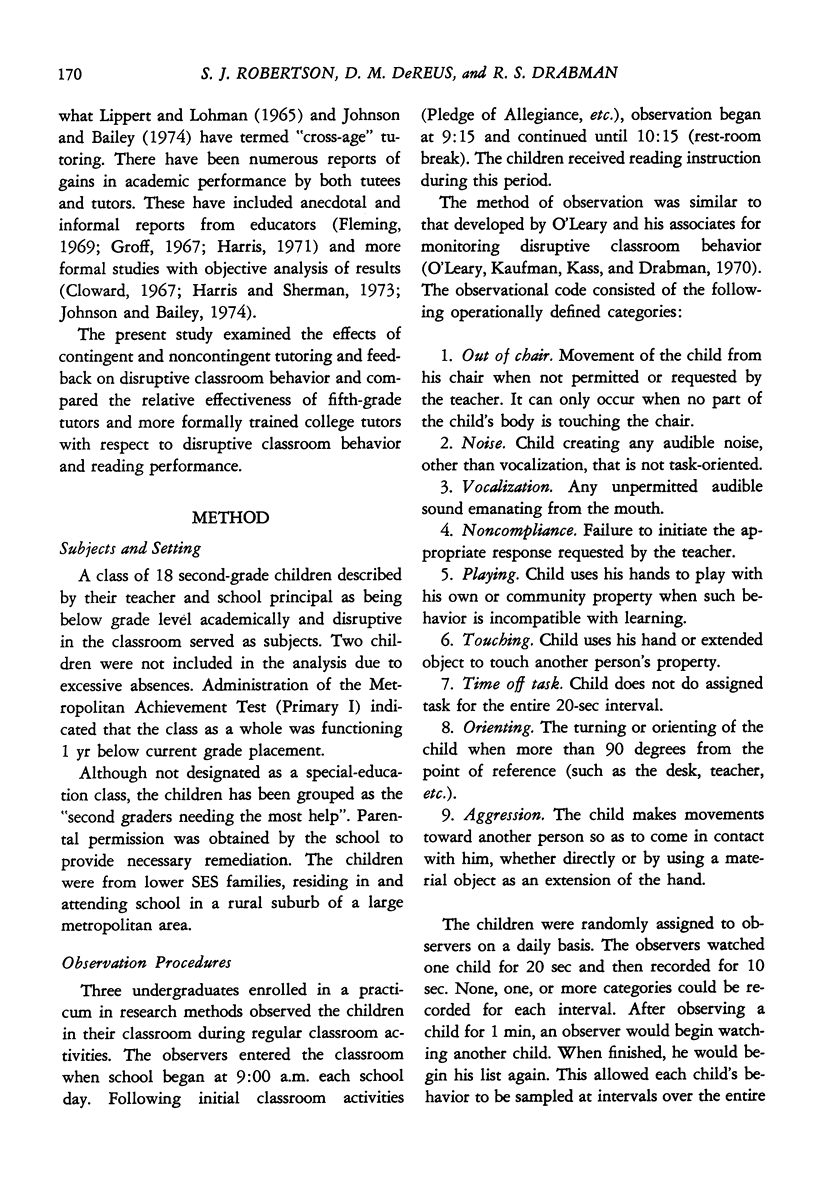
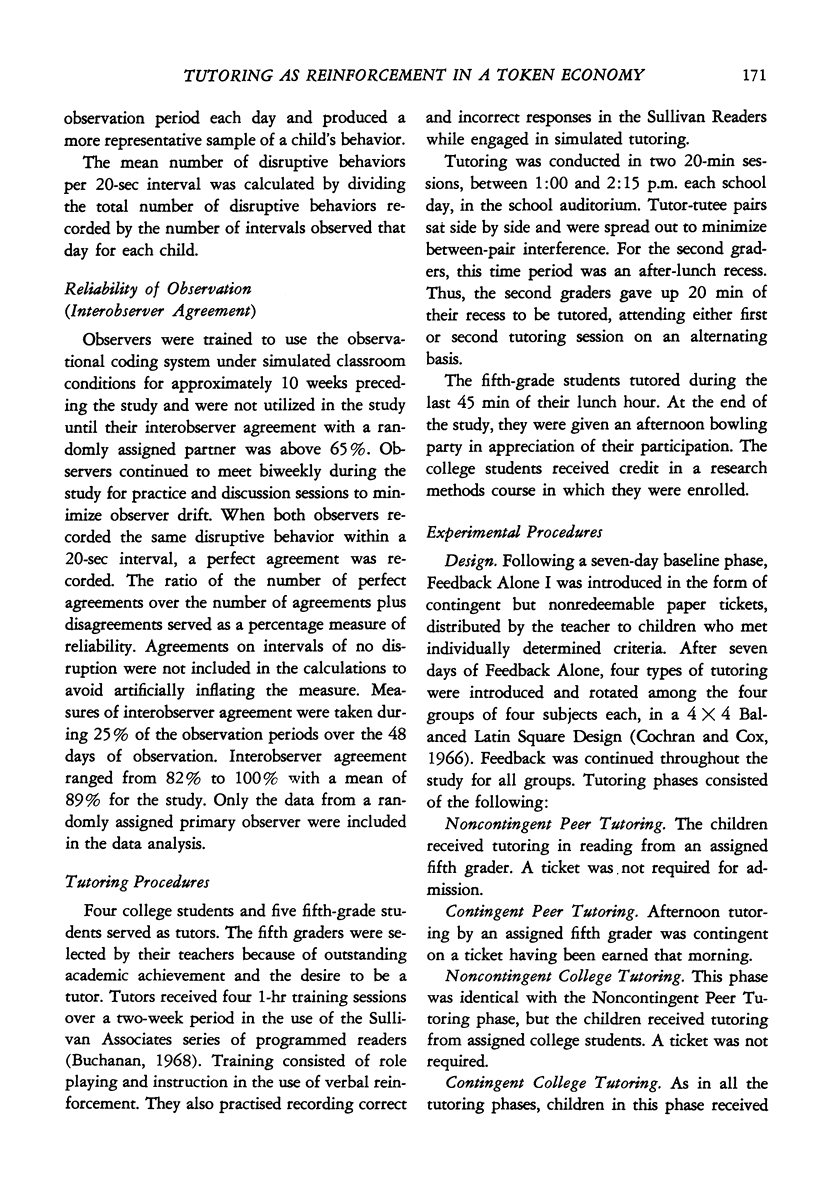
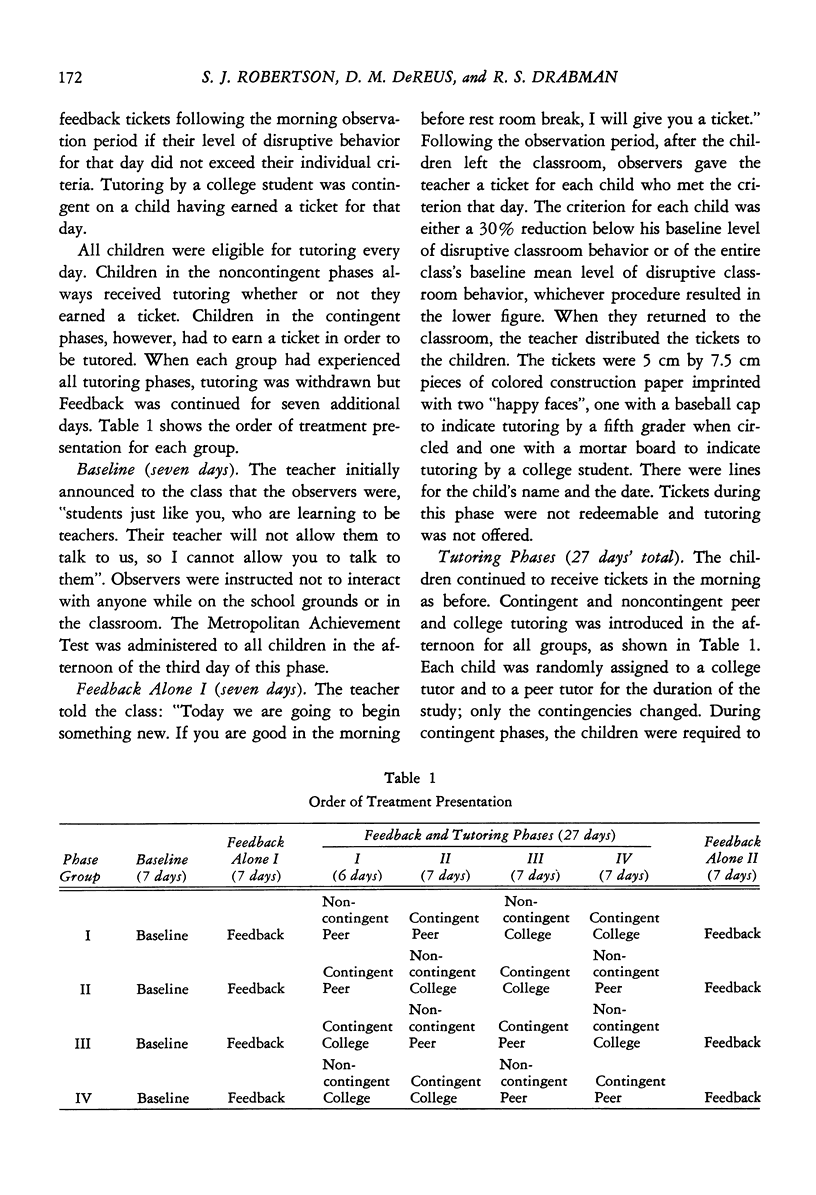
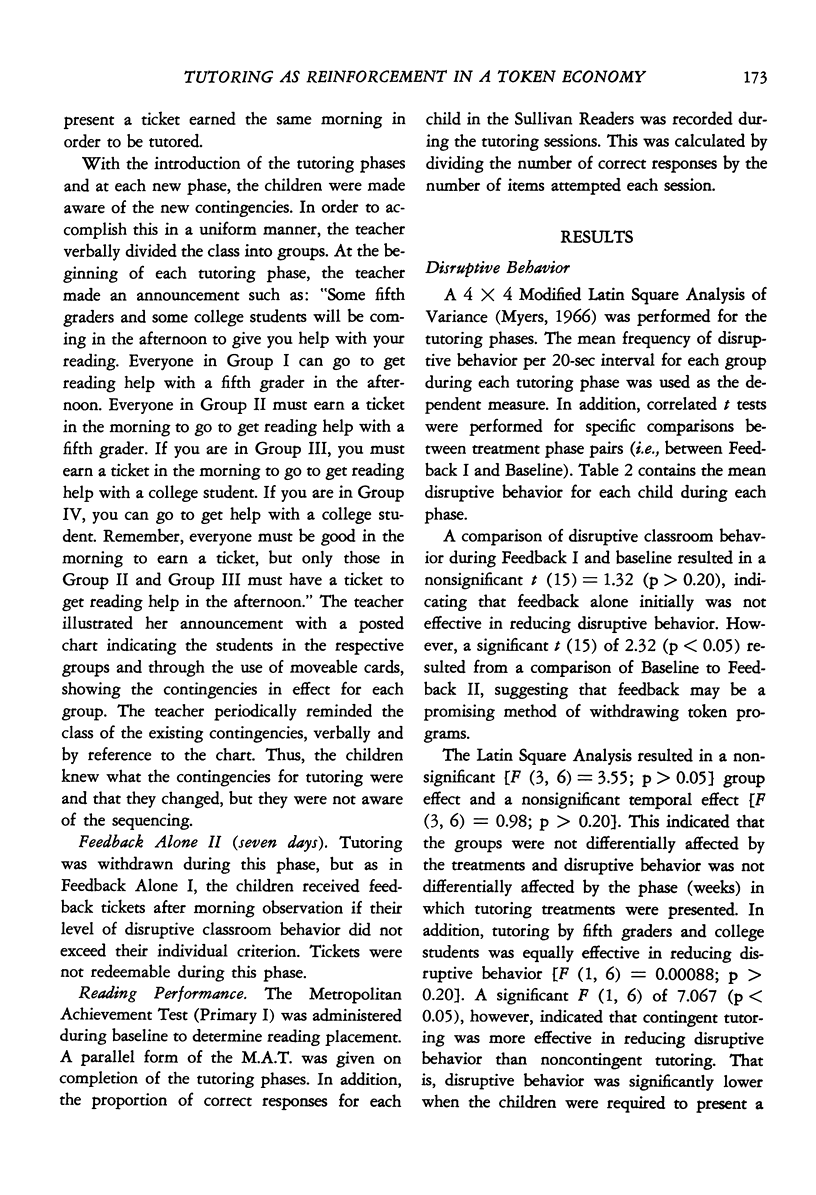
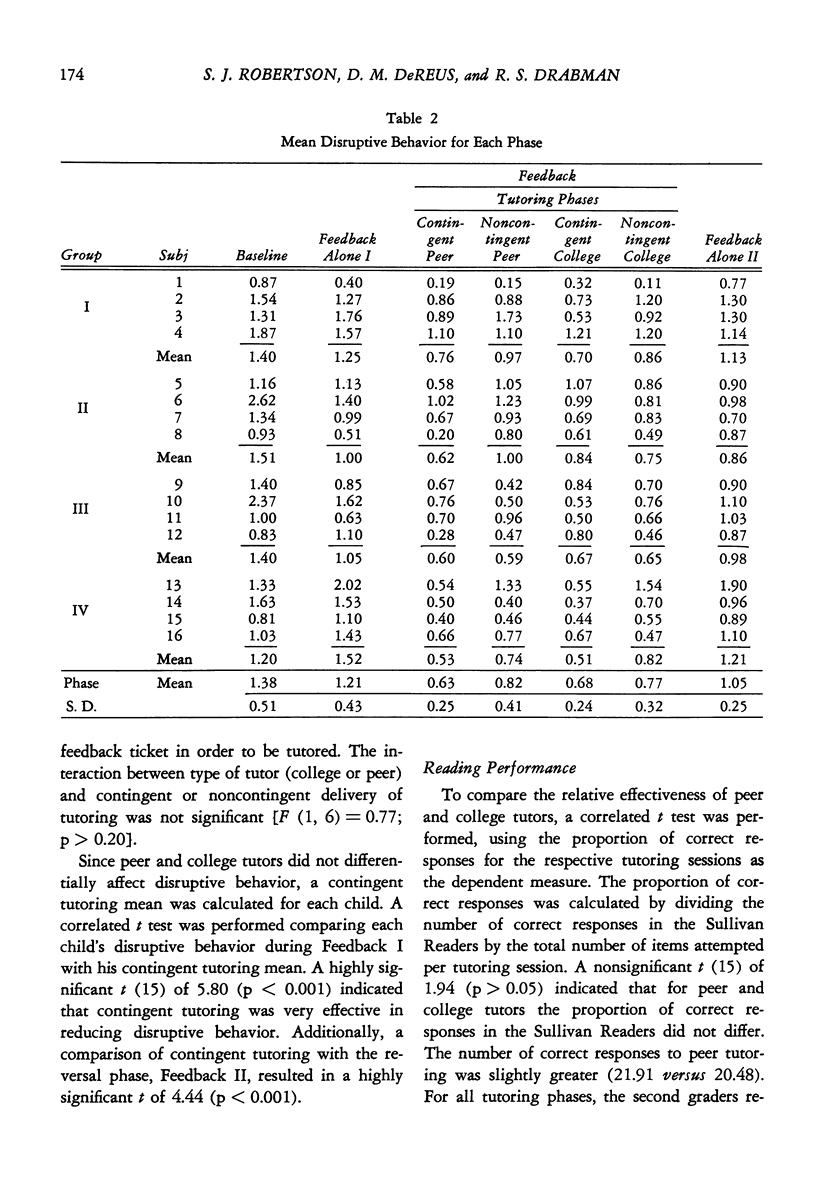
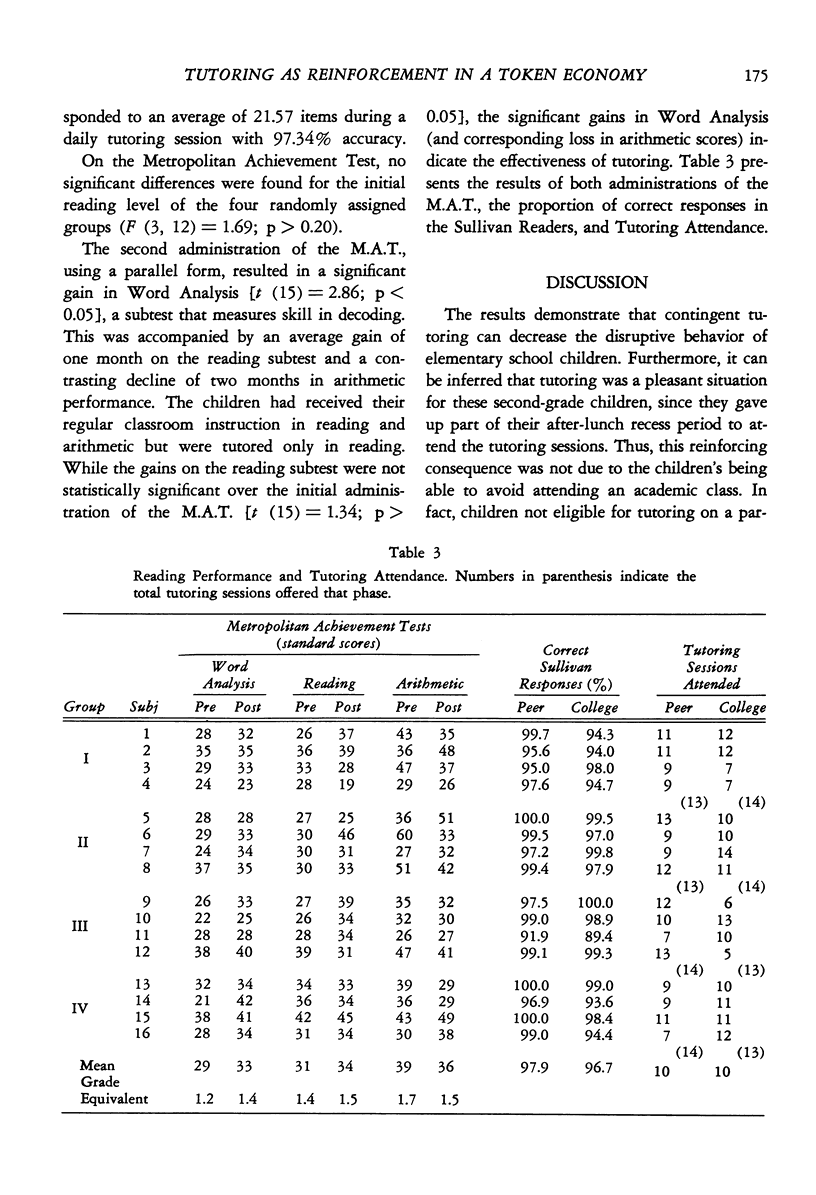
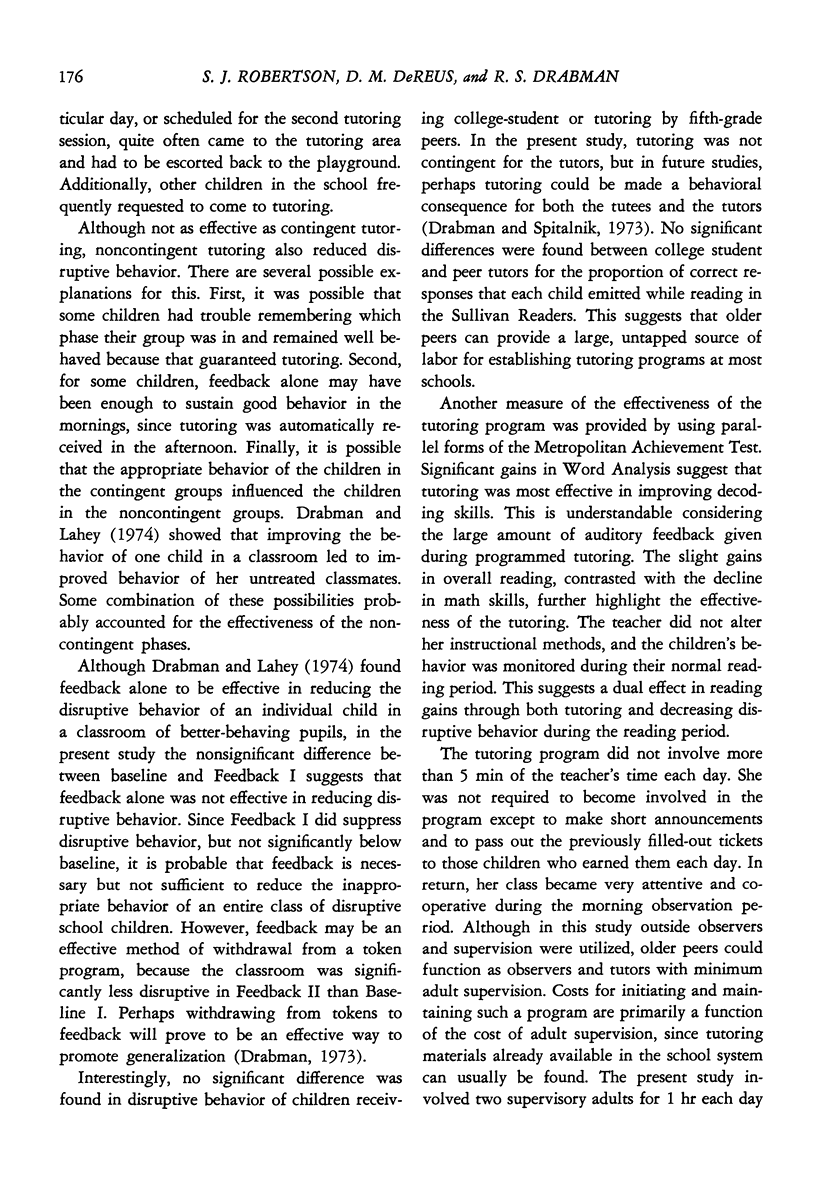
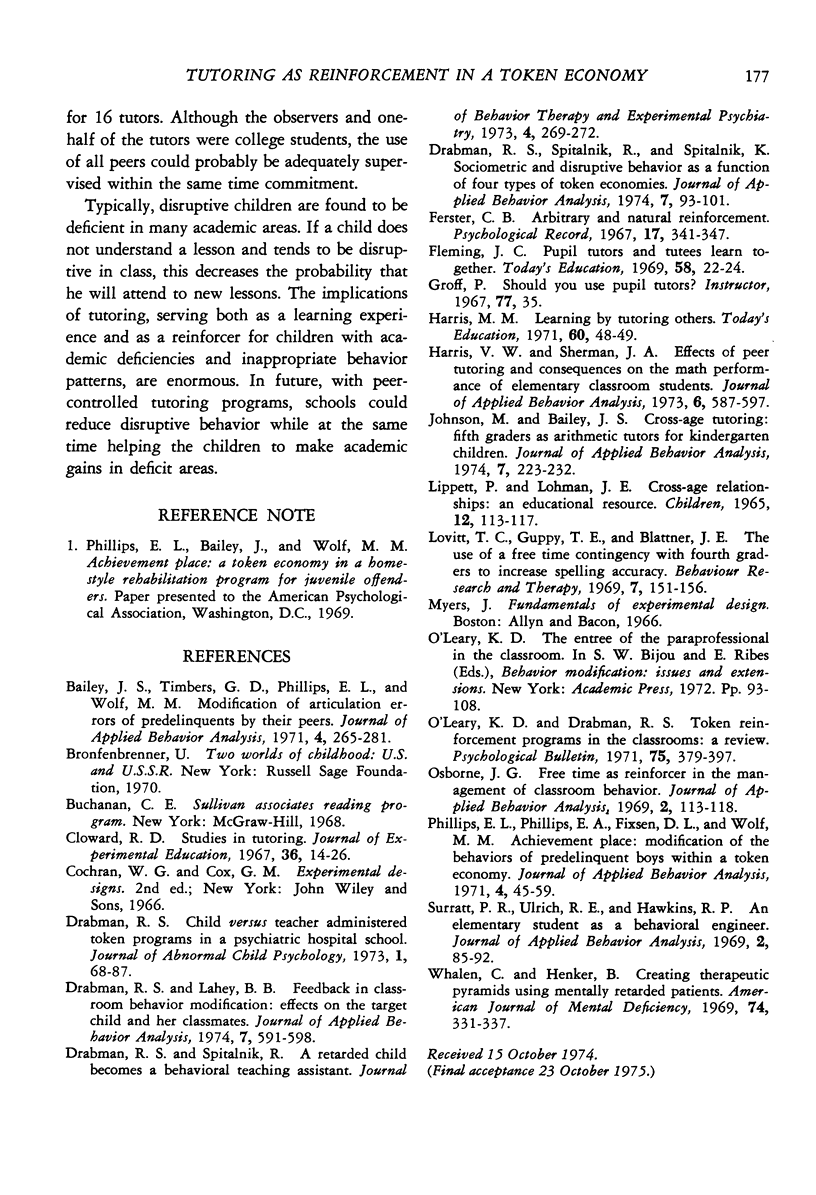
Selected References
These references are in PubMed. This may not be the complete list of references from this article.
- Bailey J. S., Timbers G. D., Phillips E. L., Wolf M. M. Modification of articulation errors of pre-delinquents by their peers. J Appl Behav Anal. 1971 Winter;4(4):265–281. doi: 10.1901/jaba.1971.4-265. [DOI] [PMC free article] [PubMed] [Google Scholar]
- Drabman R. S., Lahey B. B. Feedback in classroom behavior modification: effects on the target and her classmates. J Appl Behav Anal. 1974 Winter;7(4):591–598. doi: 10.1901/jaba.1974.7-591. [DOI] [PMC free article] [PubMed] [Google Scholar]
- Drabman R., Spitalnik R., Spitalnik K. Sociometric and disruptive behavior as a function of four types of token reinforcement programs. J Appl Behav Anal. 1974 Spring;7(1):93–101. doi: 10.1901/jaba.1974.7-93. [DOI] [PMC free article] [PubMed] [Google Scholar]
- Harris V. W., Sherman J. A. Effects of peer tutoring and consequences on the math performance of elementary classroom students. J Appl Behav Anal. 1973 Winter;6(4):587–597. doi: 10.1901/jaba.1973.6-587. [DOI] [PMC free article] [PubMed] [Google Scholar]
- Johnson M., Bailey J. S. Cross-age tutoring: fifth graders as arithmetic tutors for kindergarten children. J Appl Behav Anal. 1974 Summer;7(2):223–232. doi: 10.1901/jaba.1974.7-223. [DOI] [PMC free article] [PubMed] [Google Scholar]
- LIPPITT P., LOHMAN J. E. CROSS-AGE RELATIONSHIPS--AN EDUCATIONAL RESOURCE. Children. 1965 May-Jun;12:113–117. [PubMed] [Google Scholar]
- Osborne J. G. Free-time as a reinforcer in the management of classroom behavior. J Appl Behav Anal. 1969 Summer;2(2):113–118. doi: 10.1901/jaba.1969.2-113. [DOI] [PMC free article] [PubMed] [Google Scholar]
- Phillips E. L., Phillips E. A., Fixsen D. L., Wolf M. M. Achievement Place: modification of the behaviors of pre-delinquent boys within a token economy. J Appl Behav Anal. 1971 Spring;4(1):45–59. doi: 10.1901/jaba.1971.4-45. [DOI] [PMC free article] [PubMed] [Google Scholar]
- Surratt P. R., Ulrich R. E., Hawkins R. P. An elementary student as a behavioral engineer. J Appl Behav Anal. 1969 Summer;2(2):85–92. doi: 10.1901/jaba.1969.2-85. [DOI] [PMC free article] [PubMed] [Google Scholar]
- Whalen C. K., Henker B. A. Creating therapeutic pyramids using mentally retarded patients. Am J Ment Defic. 1969 Nov;74(3):331–337. [PubMed] [Google Scholar]


